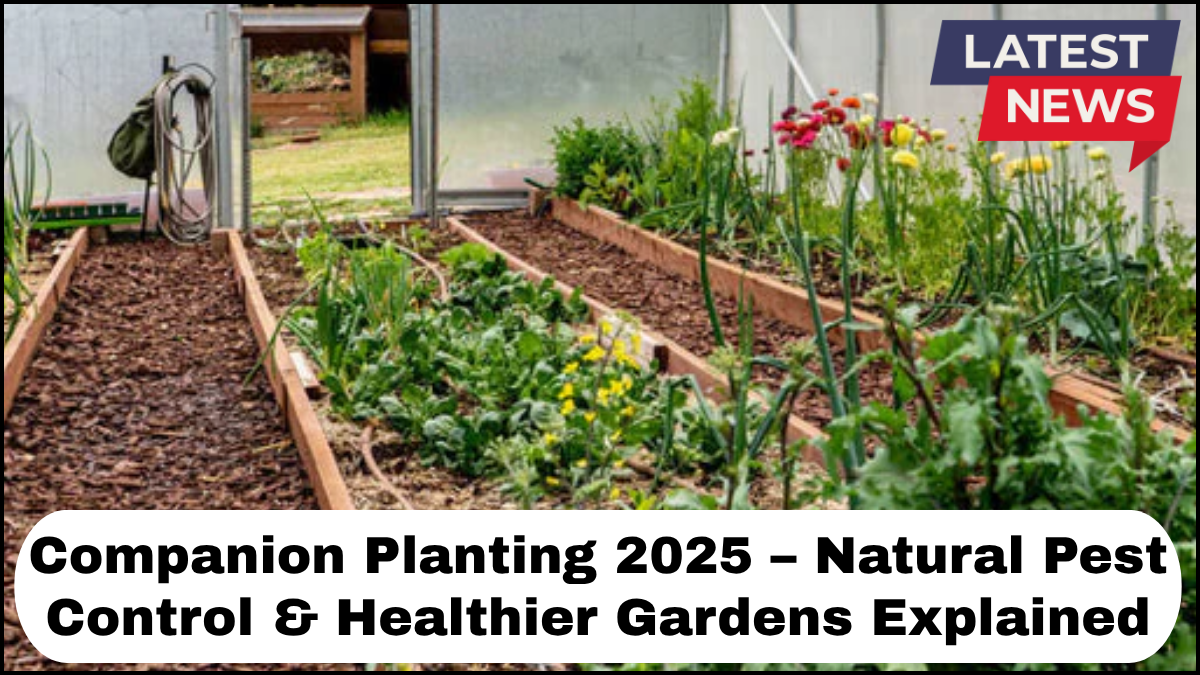In the age of climate-conscious living and organic practices, companion planting has surged in popularity as a smarter, more sustainable approach to gardening. This time-tested method isn’t just about placing certain plants together for aesthetics — it’s a strategic system for boosting yields, managing pests naturally, and creating balanced, resilient garden ecosystems.
Whether you’re new to gardening or looking to upgrade your techniques, this Companion Planting Guide for 2025 offers actionable insights to help you garden more efficiently — without the need for synthetic chemicals.

What Is Companion Planting?
Companion planting is the practice of growing different plant species in close proximity to benefit one another. These benefits may include pest deterrence, improved pollination, nutrient enhancement, and better space utilization.
Unlike monoculture planting (which often attracts pests and depletes soil), companion planting encourages biodiversity. It creates a mini ecosystem where each plant supports the others in unique ways, contributing to healthier, more productive gardens.
The Science Behind Natural Pest Control Gardening
One of the most powerful advantages of companion planting is natural pest control. Certain plants release scents or compounds that repel harmful insects or attract predators that keep pest populations in check.
For example:
-
Marigolds emit a strong aroma that repels aphids, whiteflies, and nematodes.
-
Basil not only enhances the flavor of tomatoes but also deters mosquitoes and tomato hornworms.
-
Nasturtiums act as a trap crop for aphids, drawing them away from vegetables like cucumbers and squash.
This approach reduces the need for chemical pesticides, making pest control gardening both eco-friendly and safer for pollinators like bees and butterflies.
Key Companion Planting Combinations to Try in 2025
As garden planning evolves, here are some effective pairings and groupings to consider:
-
Tomatoes + Basil + Marigold
Basil enhances growth and flavor, while marigolds deter soil pests. -
Corn + Beans + Squash (The Three Sisters)
Corn provides a natural trellis for beans. Beans fix nitrogen into the soil. Squash acts as a living mulch, suppressing weeds. -
Carrots + Onions + Leeks
Onions and leeks repel carrot flies. Carrots improve soil aeration. -
Cabbage + Dill + Nasturtiums
Dill attracts beneficial insects like wasps. Nasturtiums draw away aphids.
These combinations not only improve yield but also create a natural line of defense against pests, enhancing your garden’s longevity and sustainability.
Improving Soil Health and Nutrient Efficiency
Beyond pest management, companion planting improves soil health and nutrient utilization. Some plants act as dynamic accumulators, pulling nutrients from deep within the soil and making them accessible to neighboring plants.
For instance:
-
Legumes (peas, beans, clover) fix nitrogen into the soil, reducing the need for synthetic fertilizers.
-
Borage, when planted near strawberries, boosts calcium and potassium levels in the soil.
Rotating your companion groupings also helps prevent soil depletion and disease buildup, supporting long-term garden vitality.
Mistakes to Avoid with Companion Planting
Even the best Companion Planting Guide won’t help if common pitfalls are ignored. Here are mistakes to steer clear of:
-
Overcrowding: Planting too tightly can limit airflow and increase the risk of mold or rot.
-
Ignoring root competition: Plants with aggressive root systems (like mint) may outcompete neighbors for nutrients.
-
Wrong pairings: Some plants, such as onions and beans, don’t get along and can stunt each other’s growth.
Always research plant relationships and spacing requirements before planting.
Companion Planting in Urban and Small-Space Gardens
Don’t have a big backyard? Companion planting works just as well in raised beds, vertical gardens, and even containers. Group herbs with vegetables in window boxes or use trellised vines like peas and cucumbers to save horizontal space.
For example:
-
A patio garden with tomatoes, basil, and lettuce in one container supports pest control and maximizes limited space.
-
Vertical towers can host strawberries, spinach, and thyme, combining leafy greens with pest-repelling herbs.
The flexibility of companion planting makes it ideal for gardeners at every level, from rural homesteaders to apartment dwellers.
The Future of Sustainable Gardening
In 2025, more gardeners are turning away from chemicals and embracing natural pest control through thoughtful plant pairings. Companion planting offers a smart, science-backed path to resilient, productive gardens — one that aligns with environmental goals and personal health.
This Companion Planting Guide provides not just a method, but a philosophy: grow smarter, not harder.
Frequently Asked Questions
Q1: What is the main purpose of companion planting?
A: The main purpose is to create mutually beneficial relationships between plants to improve growth, manage pests, and enhance soil health without chemicals.
Q2: Can I use companion planting in raised beds or containers?
A: Absolutely. Companion planting adapts well to all garden types, including small spaces and urban settings.
Q3: Are there any bad companion plants I should avoid?
A: Yes. For example, don’t plant onions near beans or peas, as they inhibit legume growth. Research specific plant pairings before grouping.
Q4: How does companion planting help with pest control?
A: Certain plants repel pests through scent or attract beneficial insects that prey on common garden invaders, reducing the need for pesticides.
Q5: Is companion planting effective for beginners?
A: Yes. It’s a great entry point for natural gardening and can be as simple or advanced as you want it to be.
click here to learn more